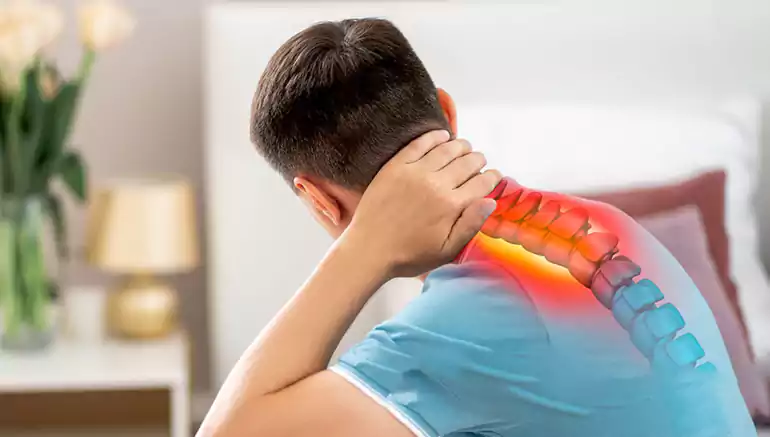
Cervical myelopathy—or degenerative cervical myelopathy (DCM)—is spinal cord compression in the neck, typically due to age-related degeneration such as disc bulges, bone spurs, ligament hypertrophy, or alignment changes. It presents with symptoms like neck pain, numbness, hand clumsiness, gait disturbance, and sometimes bladder/bowel issues .
Common signs: hand dexterity problems, clumsiness, gait unsteadiness, hyperreflexia, extensor plantar responses, sensory loss, and possibly incontinence .
Evaluation: Includes detailed neurological examination, reflex testing, gait assessment, and symptom history.
Imaging: MRI is gold standard for detecting cord compression and signal changes (T2 high‑signal or T1 low‑signal) that correlate with poorer outcomes .
Additional tools: X‑rays assess alignment and stenosis; CT and myelography help if MRI is contraindicated; electrophysiology can exclude mimics like ALS or MS .
Best suited for mild, stable, non-progressive cases (e.g., mJOA ≥13, single-level involvement) .
Includes: physical therapy (neck strengthening, gait training), NSAIDs or muscle relaxants, soft collars, activity modification, and possibly traction or manual therapy—with caution .
Some trials (e.g., Kadanka et al) showed similar outcomes to surgery over 3 years for mild cases; however, close monitoring is essential for deterioration risk or spinal cord injury .
Recommended for moderate to severe myelopathy, progressive symptoms, or evidence of cord compression with clinical deficits .
Meta-analysis shows better recovery rates and JOA score improvement vs conservative care, though postoperative success may vary with age and severity .
Surgical decompression plus fusion (anterior, posterior or combined) preserves function and prevents further decline .
Anterior decompression and fusion (ACDF/ACCF): Ideal for anterior compression, cervical kyphosis, or limited number of levels. Effective JOA improvement (≈50–73%) has been reported .
Posterior approaches (laminoplasty, laminectomy ± fusion): Preferred for multilevel compression, neutral/kyphotic alignment, or in certain patient subgroups. Outcomes are favorable in properly selected cases .
Hybrid or disc arthroplasty: Emerging options to preserve motion and reduce adjacent segment disease, especially in younger patients; patient selection is key .
A. Individualized Assessment
Tailors decisions based on neurological exam, imaging findings (e.g. T2/T1 signal changes), JOA/mJOA scoring, duration of symptoms (>18 months is poorer prognostic factor), and patient goals .
B. Stepwise Care Plan
Mild, stable cases: begin with conservative therapy and frequent reassessment.
Progressive or moderate‑severe cases: prioritize early surgical evaluation to prevent irreversible cord damage.
C. Precision Surgery
Choice of approach is guided by alignment, number of affected levels, and compression location. Navigation and minimally invasive tools enhance safety and recovery.
D. Rehabilitation & Support
Postoperative therapy focuses on functional restoration. For conservative cases, structured physical therapy supports independence and mobility.